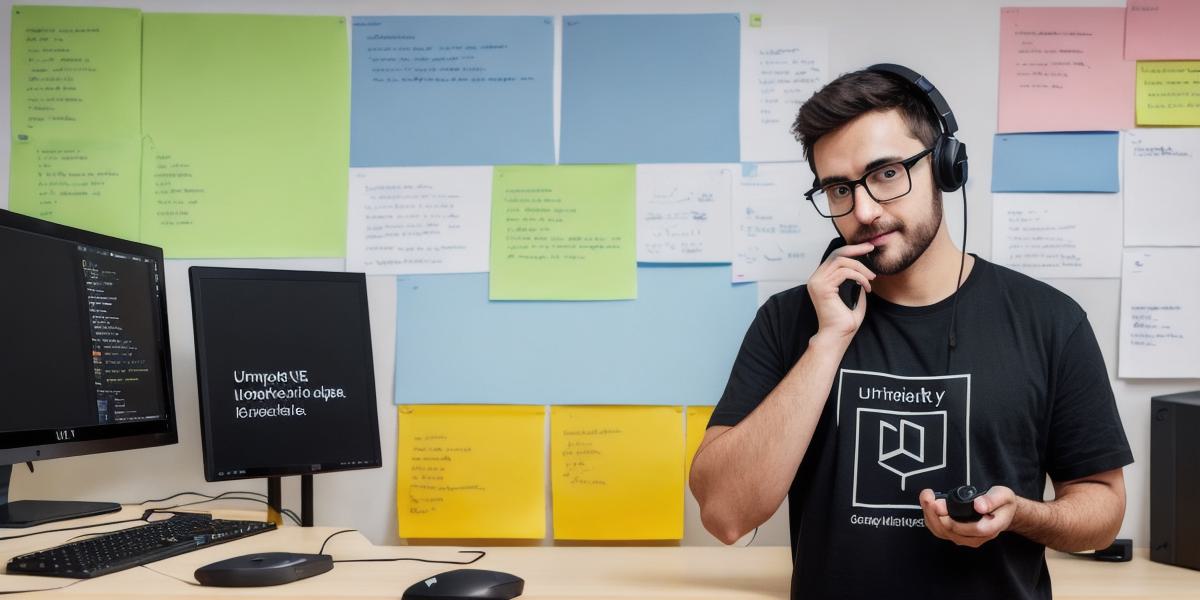**Unleashing the Power of Unity for Web Developers:
A Comprehensive Guide to Getting Started with Unity Quest Development**
**Introduction**
Welcome, web developers!
In today’s dynamic tech landscape, exploring new tools and techniques is essential to keep up with the competition. One such innovation that has gained significant traction in recent times is Unity Quest development for web applications. Unity, a popular game engine, offers an expansive set of features for creating interactive 3D experiences, making it an ideal choice for web developers looking to add an engaging dimension to their projects. In this comprehensive guide, we’ll walk you through the fundamentals of getting started with Unity Quest development as a web developer.

**What is Unity Quest Development?
**
Unity Quest development refers to creating interactive 3D stories or experiences for web applications using Unity’s powerful engine and its integration with tools like Google’s WebGL and WebXR. These quests can include puzzle-solving, storytelling, educational content, and immersive experiences designed to captivate audiences in a unique and engaging way.
**Prerequisites: Essential Skills and Tools**
To get started with Unity Quest development, you should have a solid foundation in web development technologies such as HTML5, CSS3, JavaScript, and an understanding of version control systems like Git. Familiarity with 3D modeling, animation, and game design concepts is also beneficial but not required, as there are plenty of resources available to learn these skills within the Unity ecosystem.

**Setting Up Your Development Environment**
1. **Install Unity Hub**: Unity Hub is a centralized installation manager for Unity and its companion tools. Download and install it from the official Unity website (https://unity3d.com/).
2. **Create a New Project**: Open Unity Hub, create a new 3D project, and configure the settings to suit your web application’s requirements. Make sure to select the WebGL build platform for targeting the web.
3. **Integrating with Your Web Application**: Use tools like iframe embedding or WebAssembly to integrate your Unity-built quest into your web application. Google’s WebXR and A-Frame libraries can be used for building more advanced, spatially aware web experiences.
**Creating Your First Quest in Unity**
1. **Set Up the Scene**: Start by creating a basic scene that includes your environment, characters, and interactable objects. Use Unity’s Asset Store to import pre-made assets or create your own using 3D modeling software.
2. **Add Interactivity**: Implement user input, physics interactions, and scripting logic to make your quest engaging and interactive. Unity offers a powerful scripting API with C support, allowing you to customize behavior in complex scenarios.
3. **Design the User Interface**: Create an intuitive user interface (UI) for your web application using tools like Unity’s UI system or external libraries like Canvas. Make sure the UI is responsive and adaptable to various screen sizes and resolutions.
4. **Publishing Your Quest**: Once your quest is complete, use Unity’s built-in publishing features to generate a web-compatible build of your project. Test it thoroughly in multiple browsers and devices to ensure optimal performance and compatibility.
**Summary: Embracing the Future of Web Development with Unity Quest Development**
Unity Quest development opens up new opportunities for web developers, allowing you to create immersive, interactive 3D experiences that captivate and engage users like never before. By following the steps outlined above, you’ll be well on your way to creating your first Unity-powered quest for the web. Remember, practice makes perfect – don’t hesitate to experiment, learn from mistakes, and iterate until you’re satisfied with the final product.
